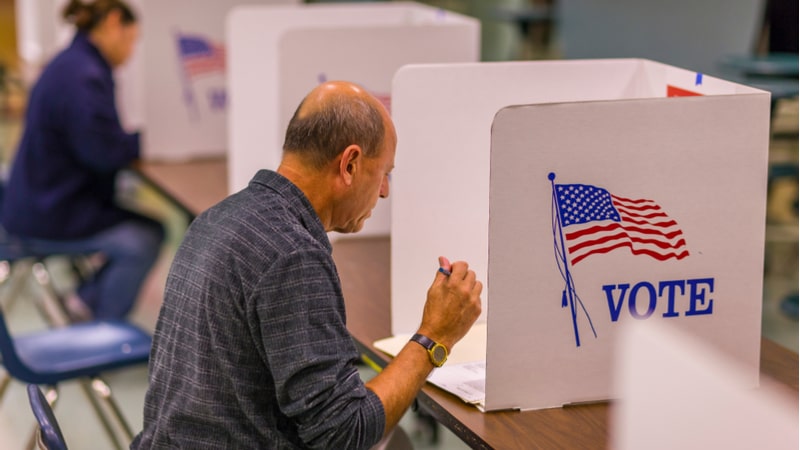
Thomas Hicks, commissioner of the U.S. Election Assistance Commission, said today that EAC has developed a set of voluntary voting system guidelines to aid local election authorities, but the commission currently lacks a quorum to vote on the standards and distribute the guidance to localities.
EAC currently has two active commissioners of a possible four, but requires a quorum of three in order to vote. President Trump has nominated two people to serve on EAC, but there has been no movement in Congress to confirm the nominees.
“I’m hoping the Senate Rules Committee and the Senate come together and vote those two folks up or down relatively soon,” Hicks said today at the Symantec Government Symposium.
Thomas MacLellan, director of policy and government affairs at Symantec, said that a confirmation vote in the Senate “would be a good place to start.”
“It’s not heavy-handed, it’s not dollars, it respects separation of powers, and provides for leadership,” MacLellan said of the potential congressional impact on election security. EAC requires that no more than two commissioners be from the same political party, and the current EAC commissioners are both Democratic appointees of President Obama.
MacLellan indicated the need to “push forward with the development of the standards” that come out of a Federal body like EAC.
EAC also oversees the distribution of election assistance funding to states, another area where it intersects with Congress. Lawmakers appropriated $380 million in election assistance grants to the states in the 2018 omnibus funding bill, with funds distributed to the states beginning in March.
But an equal amount of election assistance funding was zeroed out in preliminary appropriations bills for 2019, with some legislators citing a lack of information about how the 2018 funds were being spent.
Today, Hicks provided more context about where the $380 million in funding went, after it was disbursed to states over a period of roughly 5 months.
He explained that states received funding relative to their population, with each state receiving a minimum of $3 million. Around $134 million was spent on cybersecurity. States “hired cybersecurity experts, or upgraded their software or implemented new cybersecurity defenses,” Hicks said, sharing slides that indicated 41 states had allocated grant funding to cybersecurity.
“A number of states also went towards purchasing new voting equipment. Much of the equipment purchased under the Help America Vote Act of 2002 is coming to the end of its lifecycle,” he added. Just over $100 million in funding went toward voting equipment across 33 states.
Hicks also noted that states have five years – until 2023 – to spend the funds. With uncertainty surrounding future grants, about $54 million in funding was placed in state reserves for later use. “They don’t want to just throw all that money toward fixing things now,” Hicks said, suggesting that the funding could also aid in the 2020 and 2022 elections.
An additional $52 million was spent on voter registration efforts in 30 states, and $20 million on election audits.
